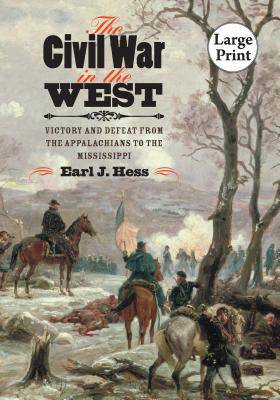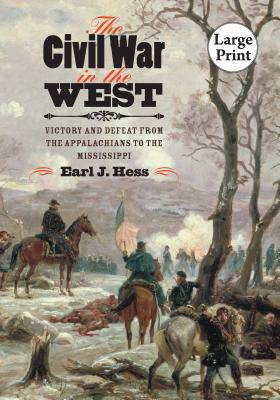
- Retrait gratuit dans votre magasin Club
- 7.000.000 titres dans notre catalogue
- Payer en toute sécurité
- Toujours un magasin près de chez vous
- Retrait gratuit dans votre magasin Club
- 7.000.0000 titres dans notre catalogue
- Payer en toute sécurité
- Toujours un magasin près de chez vous
92,45 €
+ 184 points
Format
Description
The Western theater of the Civil War, rich in agricultural resources and manpower and home to a large number of slaves, stretched 600 miles north to south and 450 miles east to west from the Appalachians to the Mississippi. If the South lost the West, there would be little hope of preserving the Confederacy. Earl J. Hess's comprehensive study of how Federal forces conquered and held the West examines the geographical difficulties of conducting campaigns in a vast land, as well as the toll irregular warfare took on soldiers and civilians alike. Hess balances a thorough knowledge of the battle lines with a deep understanding of what was happening within the occupied territories.
In addition to a mastery of logistics, Union victory hinged on making use of black manpower and developing policies for controlling constant unrest while winning campaigns. Effective use of technology, superior resource management, and an aggressive confidence went hand in hand with Federal success on the battlefield. In the end, Confederates did not have the manpower, supplies, transportation potential, or leadership to counter Union initiatives in this critical arena.
In addition to a mastery of logistics, Union victory hinged on making use of black manpower and developing policies for controlling constant unrest while winning campaigns. Effective use of technology, superior resource management, and an aggressive confidence went hand in hand with Federal success on the battlefield. In the end, Confederates did not have the manpower, supplies, transportation potential, or leadership to counter Union initiatives in this critical arena.
Spécifications
Parties prenantes
- Auteur(s) :
- Editeur:
Contenu
- Nombre de pages :
- 742
- Langue:
- Anglais
- Collection :
Caractéristiques
- EAN:
- 9780807872314
- Date de parution :
- 12-03-12
- Format:
- Livre broché
- Format numérique:
- Trade paperback (VS)
- Dimensions :
- 170 mm x 251 mm
- Poids :
- 1451 g

Les avis
Nous publions uniquement les avis qui respectent les conditions requises. Consultez nos conditions pour les avis.






